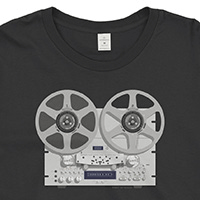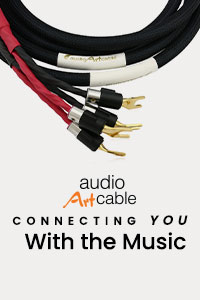PS Audio Power Plant P300
 During high-end audio’s early days, power from AC lines was never suspected of gremlins. But like every other aspect of music reproduction, it, too, came under scrutiny. In the mid 70s, rumblings suggested the best sound could be had late at night—after most everyone had gone to bed.
During high-end audio’s early days, power from AC lines was never suspected of gremlins. But like every other aspect of music reproduction, it, too, came under scrutiny. In the mid 70s, rumblings suggested the best sound could be had late at night—after most everyone had gone to bed.
Now, fast-forward a decade to the mid 80s, when Tice Audio power conditioners were considered state-of-the-art. However, for the most part, they were nothing more than high-capacity isolation transformers that solved some issues plaguing the AC line. Indeed, it was PS Audio that actually approached the problem from a different angle, but not until another decade later.
Instead of merely filtering the AC line in a passive mode, the company’s P300 takes the AC power and regenerates fresh AC by way of a DSP oscillator coupled to a high-current amplifier that essentially operates at one frequency. Utilizing high negative feedback—generally, a no-no for a wide-bandwidth power amplifiers but fine in this application because of the narrow bandwidth—results in freshly generated AC that, in comparison to what emanates from the outlet, remains relatively free of distortion. It’s a novel approach, especially considering that the P300 delivers balanced AC power known to minimize hum.
When introduced in the late 90s, the P300 had a maximum output capability of slightly over 200 watts. It was unable to work with a large power amplifier, or really any amplifier, for that matter. But if you plug your preamp and CD player (DACs or phonostages work too, as long as they have low-current demands) into the P300, the results are impressive. The change is akin to cleaning the picture window in your living room the morning after your uncle smokes his way through family game night.
 Of course, the P300 sucks power. It’s like constantly leaving on a 300-watt light bulb. Still, there’s an unmistakable upshot in sound quality for source components. Just don’t overtax the P300, or it automatically shuts down. Connected to my vintage Audio Research SP-10 mk.2 preamplifier, the P300 delivers the goods. The noise floor is lower, with less grain through the audio range. The cumulative effect is similar to going from new, inexpensive Chinese tubes to a handpicked, matched set of NOS Telefunkens. Not bad for $500.
Of course, the P300 sucks power. It’s like constantly leaving on a 300-watt light bulb. Still, there’s an unmistakable upshot in sound quality for source components. Just don’t overtax the P300, or it automatically shuts down. Connected to my vintage Audio Research SP-10 mk.2 preamplifier, the P300 delivers the goods. The noise floor is lower, with less grain through the audio range. The cumulative effect is similar to going from new, inexpensive Chinese tubes to a handpicked, matched set of NOS Telefunkens. Not bad for $500.
PS Audio continues to improve and upgrade the Power Plant series of power conditioners, and publisher Jeff Dorgay has its top P10 in one of his two reference systems. The newest design claims enough current capacity to run a large power amplifier, and plenty of additional features make it a dream to use, and our review is in progress.
But the P300 is where it all began. My pristine example cost $500 from San Diego’s Blackbird Audio Gallery (www.blackbirdaudiogallery.com) and is typical of the price a very clean P300 fetches on the used market, a testament to PS Audio’s build quality and product philosophy.





